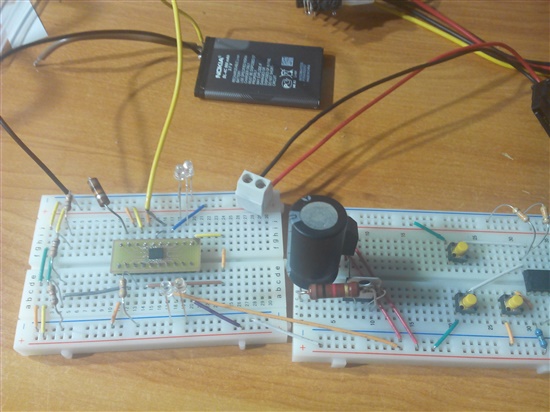Hi everyone!
I have been suffering a problem for 2 months and I have still unable to fix it.
I am trying to develop a prototype on a solderless protoboard so I converted bq24030 to PDIP package by designing a custom PCB to place it.
The only thing that works is that the bq swaps between my 2 power sources (USB and battery), but no charge of the battery occurs, no status LED is turned ON at any time so I am desperate because I have to develop a protoype and I have no idea about what is going on...
My config is:
- Rdppm: 50 Kohm (5 volts output, I know USB is outputted directly when PSEL is LOW).
- Rset: 10 Kohm (110mA is supposed to occur as battery charging current).
- Both BAT pins, connected together to positive terminal of the battery (negative to ground).
- ISET2,CE : linked to Vdd.
- TMR pin, linked to LDO pin (to disable the charge timer).
- TS pin linked to the third pin of my battery (the one that is not possitive neither negative)
- OUT pins, linked together to the entrance of my system (microcontroller with LEDs).
- USB pin, connected to 5 Volt source (PC power source).
I'm trying to charge a smartphone battery, 3,7 volts - 850 mA.
I
So, bq24030 does nothing as expected, I have read the datasheet carefully for at least, 50 times but I cant find where is the mistake I am doing...
Any idea???
Thanks in advance...



